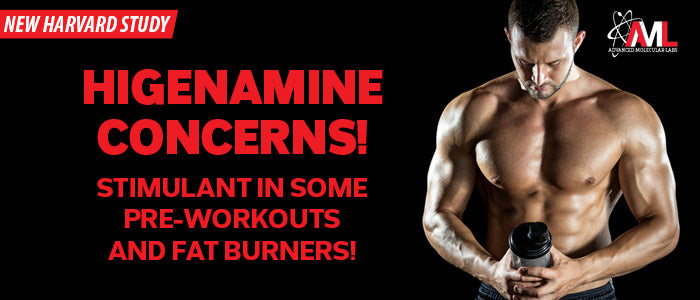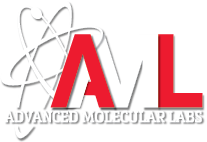


Higenamine: Health Risks in Supplements
By: Robert A. Schinetsky
Pre workout supplements these days are all about excess. The more stimulants, the more nitric oxide boosters, and the more grams your serving size contains -- the better it is. However, not all fitness supplements prioritize safety and effectiveness over sheer quantity.
...or at least that’s what you’ve been led to believe.
In this era of excess, consumers are told that high stim is the way to go, and the more variety of stimulants you have, and the higher those various stimulants are dosed, the better. A recent study by Dr. Pieter Cohen and colleagues delves into the topic of pre workout stimulants with a look into higenamine, a thermogenic stimulant often found in high stimulant fat burners.
In the post-DMAA era, higenamine has been looked to as one of those aggressive stimulants that can give you an edge, enabling you to perform better, and potentially lose fat faster. But, as you’ll see, when it comes to higenamine and dietary supplements, you best proceed with caution due to potential health risks.
Before we get into the finer details of Dr. Cohen’s latest foray into the muddlings of the supplement industry, let’s take a closer look at higenamine and why Dr. Cohen & friends thought it necessary to investigate this particular ingredient.
What is Higenamine?
Higenamine, a.k.a. norcoclaurine, is a naturally occurring chemical found in a number of plants including Nandina domestica, Aconitum carmichaelii (Wolf’s bane), and Nelumbo nucifera, to name a few.[3]
Higenamine, or rather, its parent plants, have been a staple of Traditional Chinese and Japanese medicine for centuries where it was used to treat a variety of conditions relating to the heart and lungs, including heart disease and asthma. These days, higenamine is most frequently seen in natural pre workout supplements and high stimulant fat burners for its stimulating qualities.
So, what is it about higenamine that makes it appealing to supplement formulator and manufacturers?
Let’s find out!
What Does Higenamine Do?
Higenamine stimulates beta-adrenergic receptors, specifically the beta-2 adrenoceptors, which leads to a cascade of activity in the body. Chief among the results of beta-2 stimulation is higenamine’s effects on the cardiovascular system. Animal studies have noted that higenamine administration exerts both inotropic and chronotropic in isolated rat atria.
Additional studies have also shown that higenamine relaxes isolated rat aorta, and it inhibits epinephrine, ADP or collagen-induced platelet aggregation in platelet rich plasma.[5] Higenamine also exerts a relaxation effect on the vascular and tracheal system, as well as anti-thrombotic, anti-inflammatory, anti-apoptotic and anti-oxidative effect, and immunomodulatory effects.[3]
In other words, higenamine can alter the force of cardiac contractions, as well as its rate and rhythm. It may help relax blood vessels and the trachea allowing for better circulation and easier breathing.
Based on the myriad of actions that higenamine can cause in the body, researchers and supplement formulators alike are exploring the ingredient for its anti-obesity, pro-fat loss properties as another result of beta-receptor activation is increased lipolysis and thermogenesis. However, potential health risks associated with its use require careful consideration.
While these effects might seem pretty impressive for a plant alkaloid, here’s the catch with higenamine -- it has a ridiculously short half-life.
Human trials using an IV infusion of higenamine noted a half-life of 8 minutes, with 94% of higenamine being eliminated from the body within 30 minutes of the infusion.[4] And to top it off, higenamine is poorly absorbed in the body, with only 3-22% entering the bloodstream.[6]
These findings are bolstered by a study in rabbits that orally administered higenamine and found the time to peak concentration of higenamine was 10 minutes and the terminal half-life of oral higenamine to be roughly 20 minutes.[6]
FYI, this is the ONLY study to date in which higenamine is administered orally in isolation. No studies have been conducted to date in humans using the dosages of higenamine that are currently included in pre workouts.
Now that you’re all familiar with higenamine and what it can do, let’s get back to the topic of the latest study by Cohen & colleagues regarding the dosing of higenamine in sports and dietary supplements.
The Study
Dr. Cohen and associated performed a search for all supplements containing higenamine using The National Institute of Health’s Dietary Supplement Label Database, the Natural Medicines Comprehensive Database, and the almighty Google search engine. After compiling a list of supplements containing higenamine, they purchased two tubs of each product in March 2016.
Upon receiving the products, the team read the supplement facts, and if it did not list higenamine, they excluded said product from the study. In total, the team procured 32 different products, and of these 32, 24 products met the inclusion criteria, meaning that they listed higenamine on the supplement facts panel either directly labeled, or as part of a proprietary blend.
The team sent one copy of each of the 24 higenamine-containing products to NSF International (Ann Arbor, MI) and Netherland’s National Institute for Public Health and the Environment.
Both labs independently tested for the presence of higenamine and quantity using ultra high performance liquid chromatography (UHPLC) against a control sample of higenamine. NSF synthesized higenamine for use as its reference standard, while RIVM obtained higenamine reference standards from Sigma-Aldrich.
Study Results
Of the 24 products analyzed, only five products listed a specific amount of higenamine on the label, meaning that the rest were not disclosed and contained in a proprietary blend. Additionally, Cohen and colleagues discovered that of the five products that did label the quantity of higenamine supposedly contained in each serving, NONE were accurate. In fact, the discrepancy between the listed dosage and the amount actually contained in the product ranged from <0.01% to 200%!
Nowhere is this discrepancy more evident than the test results for a pre workout supplement which lists the higenamine content at 45mg per serving, yet lab tests showed each scoop actually contained 62 ± 6.0mg per serving![1] Additionally, another pre-workout supplement lists 50mg of higenamine per serving on the label, yet researchers found less than 0.005mg of it in the product.![1]
Commentary
What can the consumer glean from the findings of this study?
-The majority of supplements including higenamine do not disclose the amount contained
-Supplements that do list higenamine content can vary wildly from the amount listed on the label, or not even be present! Both instances wreak of grossly negligent QA/QC on the part of the supplement manufacturer and supplement company, itself.
- Consumers using products with higenamine should proceed with caution
Is higenamine safe or effective?
This is the real question. Is higenamine safe for humans to use, and if it is, is it effective for its intended purposes (fat loss, increased metabolism, etc.)?
The simple truth, is that we don’t know.
Currently, there are no studies testing the effects of oral higenamine supplementation in isolation on human beings. To date, there have been two studies funded by a supplement company which tested the effects of higenamine in regards to fat loss.
However, those studies’ findings are confounded by the fact that higenamine is administered alongside caffeine and yohimbine, both of which exert lipolytic and thermogenic actions in the body.[9,10]
Additionally, if you are a drug-tested athlete, you need to stay clear of higenamine altogether, and any supplements that contain it, as higenamine is banned by WADA.
In an interview with ScienceDaily, co-author of the study, John Travis, remarked:
“Beyond the doping risk for athletes, some of these products contain extremely high doses of a stimulant with unknown safety and potential cardiovascular risks when consumed. What we've learned from the study is that there is often no way for a consumer to know how much higenamine is actually in the product they are taking.”[2]
Bolstering the findings of the latest study by Dr. Cohen and colleagues is a 2017 review of the literature on higenamine which concluded:
“Extensive basic and clinical studies on higenamine showed valuable therapeutic effects on different disorders. However, the underlying mechanisms of higenamine have not been established. Therefore, the safety, tolerability and efficacy of higenamine are as yet, not fully understood. Additionally, some of the studies were small sample-sized and unreliable. To sum up, there is a need for deeper investigation in the mechanisms of higenamine action, as well as well-designed preclinical and clinical trials studies to test the safety and clinical value of the drug.”[3]
Finally, a new article published September 9, 2018 by ConsumerLab.com stated:
“Studies in China using small intravenous doses of higenamine (2 mg to 5 mg) have found it can increase heart rate and affect blood pressure, and is associated with side effects such as dizziness, headache, heart palpitations, shortness of breath and chest pain.”[10]
For the record, these studies were conducted when higenamine was administered intravenously, and no studies have been done with higenamine administered orally in humans in isolation to see if these same effects manifest themselves. Simply put, more research should be done on human subjects orally ingesting higenamine at the doses used in many of today’s pre workout supplements before we can truly know whether or not it is safe to use.
That being said...
It should be noted that no study is perfect, and this current review by Cohen et al. is no exception. For starters, this study, while claiming to scour various databases for all higenamine-containing supplements, fell far short of including all the higenamine products that are currently available to consumers.
Another shortcoming of the study, is that some of the supplements included in the analysis are no longer sold by their respective company. While the products may be available in retail outlets, select products are no longer displayed on the company’s official website, indicating they may no longer be manufactured and thus not a concern to the consumer.
Finally, little is mentioned regarding the chain of custody of the products through the procurement and testing process. At any point, these products could have been tampered with, adulterating the contents of the respective product. It may have been better for Cohen and Co. to procure the tubs directly from the manufacturers to protect against product tampering.
Takeaway
Much still needs to be learned about higenamine, and its effects on the human body when taken at the dosages included in many of the currently available pre workout supplements. Until that time comes, you’re best served to proceed with caution should you choose to use a supplement containing higenamine, or avoid supplements using the unproven ingredient altogether.
References
-
Pieter A. Cohen, John C. Travis, Peter H. J. Keizers, Frederick E. Boyer & Bastiaan J. Venhuis (2018) The stimulant higenamine in weight loss and sports supplements, Clinical Toxicology, DOI: 10.1080/15563650.2018.1497171
-
NSF International. "Public health researchers warn of dietary supplements containing higenamine." ScienceDaily. ScienceDaily, 6 September 2018.
-
Zhang, N., Lian, Z., Peng, X., Li, Z., & Zhu, H. (2017). Applications of Higenamine in pharmacology and medicine. Journal of Ethnopharmacology, 196, 242–252. https://doi.org/10.1016/j.jep.2016.12.033
-
Feng S, Jiang J, Hu P, et al. A phase I study on pharmacokinetics and pharmacodynamics of higenamine in healthy Chinese subjects. Acta Pharmacologica Sinica. 2012;33(11):1353-1358. doi:10.1038/aps.2012.114.
-
Zhou, S., & Du, G. (2003). [Effects of higenamine on the cardio-circulatory system]. Zhongguo Zhong yao za zhi = Zhongguo zhongyao zazhi = China journal of Chinese materia medica, 28(10), 910–913.
-
Lo, C.F., Chen, C.M., 1996. Pharmacokinetics of higenamine in rabbits. Biopharm. Drug Dispos. 17 (9), 791–803.
-
Lee S-R, Schriefer JM, Gunnels TA, Harvey IC, Bloomer RJ. Acute oral intake of a higenamine-based dietary supplement increases circulating free fatty acids and energy expenditure in human subjects. Lipids in Health and Disease. 2013;12:148. doi:10.1186/1476-511X-12-148.
-
Galitzky J, Vermorel M, Lafontan M, Montastruc P, Berlan M. Thermogenic and lipolytic effect of yohimbine in the dog. Br J Pharmacol. 1991;12(2):514–518. doi: 10.1111/j.1476-5381.1991.tb12460.x.
-
Bloomer RJ, Schriefer JM, Gunnels TA. Clinical safety assessment of oral higenamine supplementation in healthy, young men. Hum Exp Toxicol. 2015;34:935–945
-
https://www.consumerlab.com/recall_detail.asp?recallid=14239





